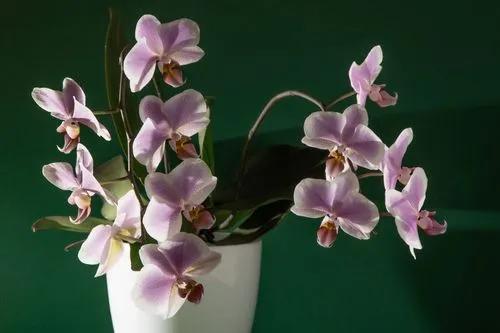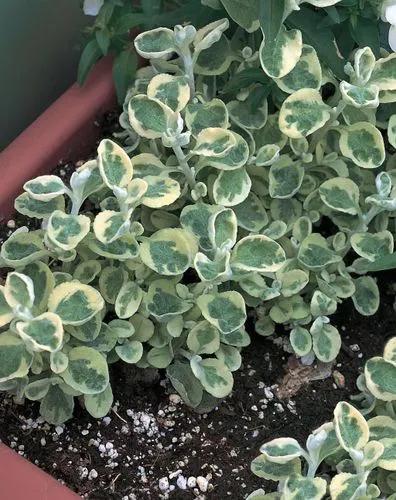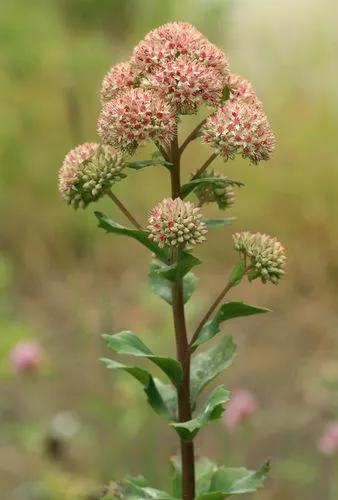Cymbidium goeringii is a beautiful species of the genus Cymbidium. It is native to Japan, China, Korea, and the eastern and western Himalayas. This orchid species is known by such names: Cymbidium forrestii, Cymbidium goeringii var. mackinnonii, Cymbidium mackinnonii, Cymbidium virescens, Cymbidium yunnanense, Maxillaria goeringii, and Cymbidium uniflorum.
Cymbidium goeringii Care
Cymbidium goeringii



Cymbidium goeringii usually grows in forests and rocky slopes at around 300-3000 meters above sea level. It is a small plant with tiny (up to 1 in/2.5 cm) pseudobulbs located by its leaf bases. Each orchid has leaves about 15-40 cm (0.5-1.5 ft) long and 0.5-1 cm wide. Cymbidium goeringii prefer to bloom in winter and spring. Each stem produces a 1-2 in (2-5 cm) 1-flowered inflorescence. The flowers are normally yellowy-green with brownish veins and have a strong scent that may remind you of lemon, lily of the valley, or jasmine.
How to Care for the Plant

Water

Being an Asian native, Cymbidium goeringii is used to an occurrence called summer monsoon. It’s a rainy period in Japan that continues through May till early summer. Cymbidium goeringii grows actively during this time, so you may want to water it abundantly, about two times a week.
This orchid also enjoys overhead watering. Do so in the early evening, when the sun goes down, so the wet leaves don’t burn in the sun. Avoid overhead watering and misting your Cymbidium goeringii in cold weather.
Reduce watering and feeding in August-early September. Don’t be afraid to dry your plant a little. After the monsoon period, there comes a dry, hot season – during this time, your noble orchid will set new flower shoots, which will expand later in the spring. If you continue abundantly watering the plant, it will still thrive but will not produce flower buds.

Pruning

This orchid doesn’t need pruning.

Fertilizer

During the period of active growth, from September through to mid-December, use a fertilizer high in nitrogen to stimulate growth. In winter, start applying a fertilizer high in phosphorous and potash to encourage future blooming. It is advised to use quarter recommended strength every week. Don’t forget to water the plant thoroughly before feeding, so the roots don’t burn. Rinse the container once or twice a month so the minerals do not build upon the walls of the pot.

Sunlight

In the warm months, Cymbidium goeringii will need about 50% shading, especially during the growth period. During the regular growth period, keep the shade level at about 30%. When the plant is flowering, the shading should be about 15-20%. In wintertime, Cymbidium goeringii can stand the bright indirect sun. If there is too light for the plant, its leaves will get bleach-white. If it is too dark, the orchid will not bloom, and the leaves will become dark green.

Soil

Fill your perfect pot with the loose, well-drying substrate that allows the water to drain quickly. You may use granulation bark in the bottom half of the pot and cover it with fine bark adding about 10% perlite and 10% charcoal. Also, you can add a small amount of chopped sphagnum moss, sand, and fibrous clay.

Propagation

To propagate your Cymbidium goeringii, wait until the blooming season is over. Find a natural division that includes 3-5 bulb groupings. If you can remove the bulbs without ruining the division, do so and place them in an individual pot filled with the soil you use for mature plants. Do not repot the orchids more often than once in 3-4 years.

Temperature

Among all Cymbidium orchids, Cymbidium goeringii is the most cold-tolerant. In the wild, this plant lives the most north than all the other members of this orchid genus. For example, it grows in the south of the Hokkaido island, where winter temperatures drop to 21˚F (-6˚C). To thrive and blossom, Cymbidium goeringii needs warm summers. If you live in hardiness zones 9a-7, you can try to grow this majestic orchid outdoors. If winter temperatures in your region are a bit more severe than in Hokkaido, arrange a greenhouse or move your Cymbidium goeringii indoors at the first signs of frost.

Container

Cymbidium goeringii has unusually long straight roots – the same as its cousin, Cymbidium ensifolium. You may want to use a pot about 6 in (15 cm) wide and about 12-13 in (30 cm) tall so the roots do not bend and break. Excellent drainage at the bottom is a must.

Fun fact

Cymbidium goeringii has a huge, heavy root system: the below groundmass of the plant is equal to the above groundmass.
Discover more plants with the list below
Popular articles






